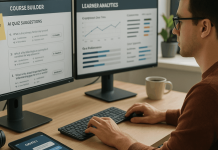Welcome to the world of data analysis! Whether you’re a beginner or looking to take your skills to the next level, online python courses for data analysis can be the perfect way to master this art.
In this article, we’ll explore the top 10 online python courses for data analysis that will empower you to become an expert in your field. These courses have been handpicked to provide you with the most comprehensive and engaging learning experience possible.
With a wide range of options to choose from, you’re sure to find the perfect course to suit your needs and take your data analysis skills to the best of your ability. So, let’s dive in and discover the power of online python courses for data analysis!
Python
Python is a highly esteemed programming language that can assist you in effectively managing data. It offers a range of libraries, such as NumPy, Pandas, and Matplotlib, for data analytics tasks.
It’s easy to learn and has a vast array of libraries and frameworks, making it an excellent choice for data analysis. Whether you’re a beginner looking to get your feet wet or an experienced coder looking to expand your skill set, an online data analytics python course can provide a wealth of knowledge and experience.
Choose Your Course With the Top 10 Online Python Courses for Data Analysis
Python for Analytics – National University of Singapore
This course offers an opportunity to gain Python skills to code business applications and teaches how to use popular Python packages such as NumPy, Pandas, Matplotlib, and Seaborn for programming analytics. The course is taught by Xiong Pend and Eli Yi-lang Tung, both faculties at the National University of Singapore.
The course is divided into two sections: the first covers five modules on Python programming with lab projects, and the second comprises 7-10 modules on Data Analysis with Python.
In This Course, You Will
- Create your initial variables and employ data types in Python scripts through this course.
- Learn how to manage, clean, and manipulate data using methods such as slicing with lists.
- Develop the ability to work with and handle large amounts of data efficiently.
- Utilize code by utilizing functions, loops, packages, and libraries.
- Study how Python developers can effectively reduce the amount of code required to solve problems.
- Acquire knowledge of Numpy and data arrays to analyze datasets from baseball and football matches.
- Benefit from complimentary access to 11 video lectures and 57 practice exercises to enhance practical skills.
Are You Fit for This Course?
You can learn python for data science for free with this beginner-level course. This is Suitable for individuals with prior basic programming knowledge or those looking to kickstart their career in Data Science.
Free Python Basics for Data Analysis – Openclassrooms
This course teaches the basics of writing programs or data science algorithms using Python programming for data analysis. It covers how to structure and group data using data types, allowing you to speed up the process of data analysis and produce desired results.
The course is taught by Benjamin Marle and Olga Volkova, experienced developers and data scientists.
In This Course, You Will
- Acquire the skill of utilizing Jupyter Notebooks to execute Python code.
- Gain knowledge of how to employ numeric and string data types in Python.
- Create and utilize lists and dictionaries for storing data as variables.
- Develop proficiency in managing program logic using Python.
- Learn how to create functions using modules and packages in Python to optimize time.
- Avail of quizzes to convert your knowledge into practical skills.
Are You Fit for This Course?
Enrolling in one of the top Python Data Analysis Courses requires a background in object-oriented programming and a basic understanding of command-line operations. This opportunity is open to beginners and professionals looking to enhance their skills and advance their careers.
Fundamentals of Data Analysis With Python – Pluralsight
This course provides an introduction to the basics of Data Analysis and how the process works, starting with collecting, analyzing, and processing data to conclude. The course covers popular data analysis python libraries for manipulating data and creating data visualizations.
The course is taught by Terry Toy, a skilled instructor with 15+ years of experience in software development and experience working on government and enterprise projects. Through this course, you will gain knowledge of Python and apply it to data analysis and extracting insights from stock market data.
In This Course, You Will
- Acquire the skill of loading, cleaning, persisting, analyzing, and visualizing data on interactive dashboards.
- Learn about Python data structures such as tuples, dictionaries, sets, and lists for organizing and storing data.
- Develop an understanding of working with CSV files and SQLite, a relational database, for collecting data.
- Apply data structures and Python skills to analyze and predict future prices of stock market data.
- Investigate the Pygal Python library to create scalable vector graphics in various styles to present data visualizations.
Are You Fit for This Course?
This free course for Data Analysis Python is designed for beginners and offers a 10-day free trial option. This course is suitable for individuals with no prior experience in the field. This is the ideal starting point if you are new to data analysis and looking to acquire Python skills.
Online Python Course for Data Analysis – LinkedIn Learning
This course is designed to provide learners with a comprehensive understanding of Python and its popular libraries, such as NumPy and Pandas. The course is designed to be beginner-friendly, and it covers the essential tools for data analysis with Python.
The course is taught by Michele Vallisneri, an experienced instructor and expert in the field of data analysis. He will guide learners through the course and help them with two big-data projects, allowing them to become proficient in analyzing data and solving problems.
In This Course, You Will
- Acquire the skill of installing Anaconda Python on Windows and writing code with Jupyter Notebooks.
- Develop an understanding of using data structures in Python.
- Practice working on Anagrams and palindromes.
- Create Numpy arrays for storing and manipulating data.
- Enhance your practical knowledge by using Numpy to identify and visualize weather patterns.
- Learn how to use Panda data frames to analyze data.
- Explore methods and techniques of applying Python to real-world case studies, such as analyzing the popularity of baby names.
Are You Fit for This Course?
This Python for Data Analysis course is available for anyone eager to learn, regardless of their prior knowledge. Upon completing the course, you will receive a certificate of completion that you can showcase on your LinkedIn profile, demonstrating your expertise in the field of data analysis using Python.
Python for Data Analysis and Visualization: Udemy
Python for data science Udemy is designed to teach you how to use Python for data analysis and visualization. Throughout the course, you will develop a deeper understanding of programming in Python and using popular libraries such as Numpy and Pandas Udemy to manipulate data arrays.
The course is taught by experienced instructor Jose Portilla, who will provide valuable insights into current data trends and how to use Python to solve real-world problems.
In This Course, You Will
- Acquire intermediate proficiency in Python programming.
- Gain knowledge in creating and handling arrays using Numpy.
- Become proficient in working with various data formats such as JSON, HTML, and Excel within Python.
- Learn to set up and use Jupyter Notebooks to analyze large data sets.
- Develop the ability to create data visualizations using Matplotlib and Seaborn libraries on dashboards.
- Receive lifetime access to 100 Python code notebooks, 3 articles, 4 downloadable resources, and hours of video lectures.
Are You Fit for This Course?
This highly-rated course is suitable for anyone looking to dive into the world of data analysis and explore the expanding field of data science. With thousands of satisfied students, this course is one of the most recommended options for anyone interested in learning Python for data analysis.
Python Data Analysis Course – Edx
This course offers an in-depth and comprehensive course that covers all aspects of data analysis using Python. This course is designed for students who want to learn how to analyze data in Python and gain a deeper understanding of the different libraries and frameworks available for data analysis.
The course is taught by Dr. Joseph, a data scientist and Head of IBM, who brings a wealth of experience and knowledge to the class.
Through this course, students will learn how to import, manipulate, analyze, and visualize large datasets using multi-dimensional arrays in Numpy and Scipy, manipulate data frames using Python’s Pandas Library, and perform machine learning using Scikit-learn.
In This Course, You Will
- Learn how to load, clean, and prepare data sets for analysis and build data pipelines.
- Acquire the skills to use Pandas Dataframes, Numpy multidimensional arrays, and Scipy libraries for processing real data.
- Create visualizations using an open-source Python library.
- Learn advanced techniques for building machine learning models and making predictions with Scikit-learn.
- Develop the ability to create models for decision-making and evaluate them using the ridge regression method.
Are You Fit for This Course?
This Data Analysis with Python Tutorial is designed for beginners who want to learn how to analyze data using Python. Familiarity with programming concepts and basic knowledge of Python will enhance your learning experience.
Upon completion of the course, learners will receive a digital and verifiable IBM badge that showcases their newly acquired knowledge and skills in data analysis with Python.
Udacity Course – Intro to Data Analysis
The course focuses on using popular Python libraries such as Numpy and Pandas to go through the entire data analysis process, including data wrangling, exploring data patterns, creating visualizations, and communicating results.
The course is taught by instructor Carolina Bukey and is designed to be a first step toward a career in data analysis, machine learning, app development, and data science. This free python for data science course is designed to prepare students for the Data Analyst Nanodegree Program.
In This Course, You Will
- Learn to formulate a question and manipulate data to conclude.
- Gain knowledge on how to utilize Numpy arrays, Pandas Series, and vectorized operations.
- Understand how to implement Python libraries on one-dimensional and two-dimensional data.
- Learn to group data from multiple sources and merge them.
- Discover techniques for using Numpy and Matplotlib to examine sample datasets.
- Receive free access to instructional videos, coding exercises, and technical mentorship.
Are You Fit for This Course?
It’s an ideal opportunity for beginners and professionals to expand their skills and start a career in data analysis. It is recommended to take the Introduction to Python course before enrolling. This is an excellent opportunity to improve your resume and learn a new skill.
Coursera Data Analysis with Python Course
The course covers the core concepts of Python programming and covers various types of data analysis techniques. Coursera python for data science is designed by Joseph Santarcangelo, a Data Scientist at IBM and is part of multiple IBM professional certificate programs such as the IBM Data Analyst Professional Certificate.
In This Course, You Will
- Learn how to manipulate and visualize data using Python libraries such as Numpy, Pandas, and Scipy on sample datasets.
- Understand how to use the Pandas Python library for data manipulation and visualization.
- Use Numpy to create data visualization dashboards and identify trends for improved business outcomes.
- Learn to build sophisticated models using the open-source Python library, Scikit-learn.
- Explore machine learning principles and apply them to building regression models and making predictions.
- Gain access to graded assignments, online labs, and video lectures.
Are You Fit for This Course?
This Python for data science in Coursera is suitable for professionals or graduates interested in starting a career as a Data Analyst. Upon completion of the course, participants will receive an IBM digital badge and a Coursera course certificate.
Data Analysis With Python Course – Cognitiveclass.ai
Cognitiveclass.ai focuses on teaching students how to explore different types of data using the Python programming language. Students will learn how to perform data analysis, perform statistical analysis, and create data visualizations to predict the future.
The course is taught by experienced instructors Joseph Santarcangelo and Mahdi Nooriar, who will guide students in mastering the core concepts of data analysis and the advantages of using Python libraries like Numpy, Pandas, and Scikit-learn.
In This Course, You Will
- Learn how to import, clean, and prepare datasets for data analysis.
- Acquire skills in manipulating Pandas Dataframes.
- Gain knowledge of using NumPy arrays for multi-dimensional data and Scipy for a relational database.
- Create visualizations using Python’s open-source library, Scikit-learn, and develop data pipelines.
- By the course’s end, you will be able to build advanced machine-learning models using algorithms.
- Receive access to video lectures, hands-on labs, and graded assignments.
Are You Fit for This Course?
This Data Analysis with Python course is designed for individuals with prior experience with Python programming and a basic understanding of Python for Data Science. By taking this course, you can improve your skills and knowledge in data analysis using Python at no cost.
DataCamp – Introduction to Python
The course is taught by Hugo Bowne, a data scientist and creator at DataCamp. It covers key concepts such as data manipulation and visualization using tools like Numpy and aims to provide learners with the necessary skills and knowledge to become proficient in Python and data analysis.
The course is structured into four parts, specifically designed to teach Python for data science, and is a great option for those looking to gain a competitive edge in the IT industry.
In This Course, You Will
- Learn how to create variables and use data types in Python scripts.
- Discover techniques for storing, cleaning, and manipulating data using lists and methods such as slicing.
- Gain an understanding of how to handle large amounts of data efficiently.
- Utilize functions, loops, packages, and libraries to optimize your code.
- Explore how experienced Python developers use concise, efficient code to solve problems.
- Learn to use Numpy and data arrays to analyze baseball and football matches datasets.
- Receive free access to 11 video lectures and 57 practice exercises to enhance your practical skills.
Are You Fit for This Course?
This python for data science free course is designed for individuals with basic programming knowledge or those looking to start a career in Data Science. It’s a beginner-level course that will help beginners and programmers to join the growing data science industry.
Are You Really Fit to Be A Data Analyst?
When exploring a career in data analytics, consider your intrinsic motivators and innate qualities. Evaluate if data analytics aligns with your natural talents and allows you to reach your full potential. Ask yourself the following questions:
Are You Inquisitive and Curious Naturally?
As a data analyst, you are responsible for uncovering patterns and trends in data by using your analytical and detective skills. A curious mind and a strong understanding of the business and its challenges are crucial for success in this role.
Do You have Logical Approach to Your Work and Analytical Mindset?
If you are an analytical thinker, with a strong focus on facts and information, and enjoy methodical problem-solving, data analytics might be a good fit for you. Your analytical mind and hunger for information will be assets in this field.
Are You A Problem-Solver?
To excel in data analytics, you must enjoy solving complex problems and determining the necessary data and methods for analysis. The ability to get hands-on with data and bridge the gap between data and business strategy is also important.
Are You Fascinated in Business Strategies?
A passion for numbers and statistics is a must in data analytics. You don’t have to be a math expert, but a willingness to work with numbers is essential. If you’re intimidated by spreadsheets, this might not be the right career for you.
Do You Have Passion to Statistics and Number?
The ability to present complex insights in a clear and accessible manner is a hallmark of a successful data analyst. Good communication skills, a knack for explaining complex concepts, and strong presentation and collaboration abilities are crucial for this role.
Are You Comfortable Collaborating and Presenting?
To be an accomplished data analyst, you must have the ability to translate complex data insights into actionable information that is easy to understand for non-data experts. Effective communication and collaboration skills are necessary for success in this role.
Why You Should & Shoudn’t Become a Data Analyst
Its worth the time being able to be aware of the advantages and disadvantages of becoming a data analyst. The following are the reasons why you should and why should not become a data analyst.
Advantages
High Demand
Data analytics has been dubbed “the sexiest job of the 21st century” by Harvard Business Review in 2012, and it is not hard to see why. With the exponential growth of data and the increasing demand for data analysts, this is a field with a high demand and a high salary.
The analytics industry has a high demand for data analysts, with 70% of job postings requiring five years or less of work experience. This, combined with the scarcity of professionals with the right qualifications and skills, creates ample opportunities for job seekers.
High Salary
As a data analyst, you can expect to receive a substantial salary increase. The salaries for big data jobs are commensurate with the high demand for data analytics experts, and many analyst jobs offer salaries that reach into the six-figure range.
With a shortage of skilled data analytics professionals, you can command a competitive salary that reflects your skills.
Flexible
One of the benefits of being a data analyst is the flexibility of the job market. You can work in a variety of industries, including healthcare, e-commerce, banking, and marketing. With the growth of technology, many organizations are seeking data analysts to improve their performance.
This means you are not limited to a single industry and can explore different opportunities. For example, healthcare is leveraging data analytics and AI techniques, such as Machine Learning, to transform healthcare education and improve the detection of early-stage tumors.
Easy Start
If you have a natural curiosity and a desire to solve problems, a career in data analytics may be the perfect fit for you. You can begin your data analyst career with less than five years of experience, and your academic background is not as important as your skills.
You can further enhance and broaden your skills by taking online courses and materials in data analytics.
Disadvantages
Privacy Challenges
Data analysts deal with a sensitive topic: privacy. As privacy concerns continue to be a hot-button issue, data analysts must be prepared to navigate the complex ethical landscape of data collection and analysis. Breaches in privacy security can arise, and it’s the responsibility of the analyst to maintain the integrity of personal information and data.
Fast-Changing
Staying current is crucial in the field of data analytics. With the rapid pace of technological advancements, data analysts must continuously update their skills and knowledge to keep up with the ever-changing demands of the job market. Understanding the requirements of the field is crucial for success.
Indefinite Job Role
The definition of data analytics is somewhat nebulous. It involves the examination and interpretation of raw data to extract insights that inform business decisions.
The specific responsibilities of a data analyst may vary depending on the industry they work in, but they must be prepared to work with large amounts of raw data, which can be time-consuming. Additionally, some organizations provide data that can be challenging to work with, making the analyst’s job more complex.
Men-Dominated Culture
Despite progress, the field of data analytics is still male-dominated. According to surveys, the gender ratio in data analytics is 7:3, with more men than women in the field. However, opportunities are available for both men and women, and there is a push to diversify the industry.
That being said, cultural barriers may still exist for some women, and they must make the choice to either overcome these barriers and pursue their dream career or opt for a different path.
Online Python Courses for Data Analysis is the Best Program
The 10 courses that we have highlighted in this article are some of the best in the industry. They have been carefully selected to provide a comprehensive and engaging learning experience.
Don’t wait any longer; start your journey today and discover the power of online Python courses for data analysis. With the right course, you’ll be able to take your data analysis skills to the next level and open up a world of new opportunities. So, what are you waiting for? Start learning today and join the ranks of data analysis experts.










